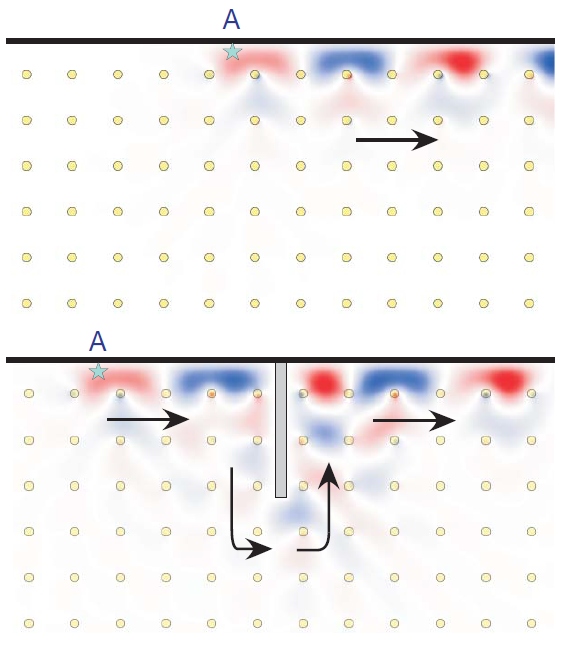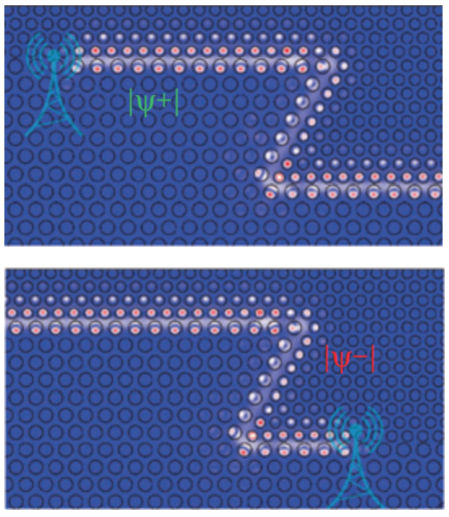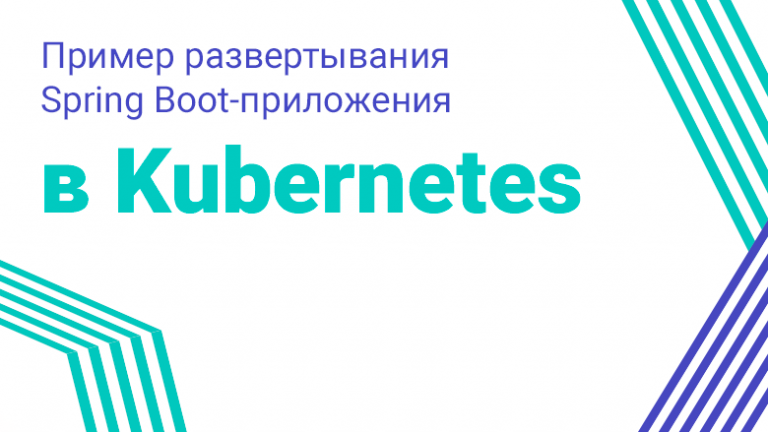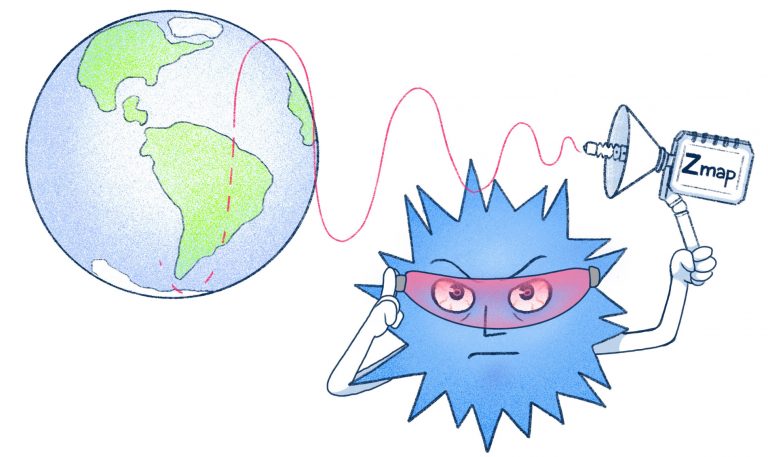Topological Photonics: How a Mathematical Concept Helps Create Advanced Devices
The technical basis for the implementation of the exchange of information is digital electronics. It uses semiconductor devices (mainly transistors). Based on them, logical elements are collected: registers, switches, counters and microcircuits. Processors can consist of billions of such elements, so the question arises of the speed of their switching and signal propagation in such a complex circuit. At a typical frequency of 3 GHz, one clock cycle takes about 300 ps. During this time, voltages and currents change, transients arise and decay – in general, a new state is established. This imposes restrictions on transistors, namely their cutoff frequency (it must be several times higher than the processor clock frequency).
The cutoff frequency of transistors lies within hundreds of GHz. Further miniaturization could increase this value, but transistors cannot be made too small. Otherwise, where the electrons should not pass, they will “tunnel”. There is a separate blog post from Intel devoted to a more consistent explanation of this issue. So far, these problems have been partially solved by increasing the number of processors and adding a multi-level cache, which is a kind of buffer between the processor and RAM.
A similar problem arises when transmitting signals over long distances. That is why, if possible, use optical fiber, in which the electric current is replaced by a stream of photons – particles of light that move at the highest possible speed. In addition to speed, switching to light eliminates excessive overheating of systems and makes their operation safer. But here there are certain difficulties. One of the issues is the loss of absorption and scattering of light in the propagation medium (the attenuation of light in a fiber is several dB / km). And when we think about how to resolve it, we approach the main topic of the article, namely topological photonics. It helps to achieve certain configurations of light-conducting structures so that electromagnetic waves themselves go around obstacles.
And here is the topology
As a branch of mathematics, topology studies properties that do not change with continuous deformations of an object. Many have heard of mug and bagel example – if you smoothly flatten and stretch each of the objects without incisions and self-intersections, then the number of holes in them will remain. This fact has a strict mathematical formulation and applies to objects of arbitrary nature. Moreover, the conserved number is called a topological invariant.
This mathematical concept was applied to the zone theory of solids. According to this theory, in all crystals (including photonic – periodic structures with alternating in space dielectric or magnetic permeability) waves can propagate only those frequencies that lie in the allowed frequency ranges, or zones. Each frequency has its own wavelength (or, as is customary in solid state physics, the wave number is the reciprocal of the wavelength).
If you build a graph in the axes of the wave number-frequency, you get the so-called zone diagram, which contains information about the periodic structure. With continuous deformation of the zone in the diagram, without overlapping forbidden zones and self-intersections, there exists a quantity that remains unchanged. It turned out that it is associated with the additional phase that the wave acquires with a slow (adiabatic) cyclic change in the parameters of the system under consideration. This quantity is called the Chern number and is calculated when the topological properties of periodic structures are studied. If it is equal to zero, then there is no additional phase, and the system is called topologically trivial (for example, vacuum).

Illustration of a nonzero phase of berry. When passing a closed path within one zone, the eigenvector (arrow) rotates 180 degrees due to the non-trivial topology of this zone, which is twisted into a Mobius strip
The concept of an additional phase seems to be just an abstract theoretical construction. What is the practical use of this? This question is answered by a key concept, which in the English language literature has received the name bulk-edge correspondence (literally – volume-edge correspondence). It turns out that if we juxtapose two structures with different Chern numbers, then at a certain frequency a boundary (“interface”) state will arise, localized exactly at the junction.
It is, as it were, the connecting link of the band structures, and therefore its frequency lies directly in the forbidden zone. As a result, it is necessary to apply a strong enough effect to “break” the corresponding boundary state. This fact is called topological security – the interface state will be resistant to disorder in the system and, moreover, will go around obstacles along the border. He has nothing left to do!

Electromagnetic edge state
Since the edge between the topological structure under consideration and the vacuum is also an interface, there will also exist states called edge ones at the edge. If we are talking about a one-dimensional chain of particles, then this will be a state “frozen” at the edge. This does not mean that people managed to stop the light – the field in this state fluctuates in time, but does not move in space, such as a standing wave in a resonator. In two- and three-dimensional cases, the edge states can already move along the edge or surface without scattering by defects, which has prospects for creating topologically protected devices.
How to make zone topology nontrivial
The mechanisms for the implementation of topological states are usually divided into two classes – with broken symmetry to time reversal (T-symmetry) and with preserved T-symmetry. An example of the first type is quantum Hall effect. If we imagine a two-dimensional electron gas in an external perpendicular magnetic field, then due to the action of the Lorentz force on the electrons, they will begin to rotate in orbits in the same direction. Inside this gas, the currents created by neighboring electrons inside the system will be compensated, but the currents at the edge will not, creating a conductive boundary. This system is an insulator in volume, and a conductor along the edge; electrons cannot scatter backwards due to a magnetic field. Such a “phase” of matter is called a topological insulator.
Another scenario is the absence of an external magnetic field. Then, it would seem, unidirectional edge states cannot exist: by reversing the time in the equations, it is possible to ensure that these edge states propagate in the opposite direction. However, it is worth supplementing the model – in real experiments, they often deal with a two-dimensional system of atoms inside which electrons are already moving. Then, an important correction to the described picture is made by the spin-orbit interaction – due to the orbital motion of the electron around the nucleus, an instantaneous magnetic field will be created, which will in a certain way orient the electron spin.
Electrons with one spin will conduct current along the edge in one direction, and electrons with the opposite spin in the other (spin Hall effect). This does not mean that all substances are topological insulators, since the spin-orbit interaction is a universal effect; the main thing is the presence of the forbidden zone and a non-zero topological invariant.
In the electromagnetic context, a violation of the symmetry of time reversal corresponds to the use of some magneto-optical phenomenon. For example, the Faraday effect, when a static external magnetic field affects the optical properties of the medium (the refractive indices for right- and left-circularly polarized waves will be different)[1]. An analog of the spin Hall effect in systems with preserved T-symmetry is bianisotropyin which the external electric field, in addition to the electric dipole moment in the particle, also induces a magnetic moment, and the magnetic field – an electric dipole moment[2], – allows you to implement this.

An electromagnetic topological state propagating along the interface between two structures with different topologies of zones
A little more classification
Light can be considered both from the classical point of view (electromagnetic wave) and from the quantum one (photon), depending on the size of the system in question and the values of the transmitted energies and momenta. The concepts of topological photonics can be applied to both classical light and quantum light. Classical systems are investigated mainly to create disorder-resistant systems with the ability to control light without scattering. These include topological waveguides, dividers, switches and other devices where special stability is required. An interesting solution is a topological structure based on active elements – a topological laser, which operates in a single-mode mode, allowing stable transport of the generated laser radiation[3]. The physics of nonlinear optical effects in topologically nontrivial systems turns out to be interesting – due to the significant localization of the field in topological states, third-harmonic generation from the edge of a one-dimensional chain of silicon nanoparticles is enhanced[4].
Recent studies of the physics of pairs of photons interacting with each other due to the nonlinearity of the medium have shown that such coupled pairs are also capable of localize on the edge, realizing topological states. It is also worth mentioning the topological states of higher orders – the so-called low-dimensional states localized in corners in the case of a two- or three-dimensional system (corner state), or the states localized on the edges of three-dimensional structures (hinge state). In recent experiments, managed to create quadrupole topological insulator in the infrared region of the spectrum (light is slightly longer wavelength than visible radiation). In the future, combining various types of topological states and new constructive solutions, scientists will be able to achieve new degrees of freedom in controlling light.
Summary
Scientists in a number of leading laboratories around the world are working to create new and improve existing photonic topological structures. In practice, this is a photonic crystal in which the nontrivial topology of the photonic zones is somehow implemented. If you shine on such a structure at a certain frequency, the electromagnetic field (or photon) is localized at the edge and propagates at a certain speed without scattering by defects. This approach allows you to create topological waveguides and lasers, to achieve amplification of nonlinear effects.
The main problem of the widespread use of such structures in practice is price. The manufacture of arrays of nanoparticles is a complex technological process. However, even under such conditions, scientists and engineers manage to create models that are either macro analogs of the corresponding optical structures and operate at lower frequencies in the microwave region, or systems described using the same equations (topoelectric circuits). This is a great way to experimentally test one or another model for its further reduction to nanoscale.
[1] Zheng Wang, Yidong Chong, J.D. Joannopoulos and Marin Soljačić “Observation of unidirectional backscattering-immune topological electromagnetic states” Nature 461, 772–775 (2009)
[2] Alexander B. Khanikaev, S. Hossein Mousavi, Wang-Kong Tse, Mehdi Kargarian, Allan H. MacDonald and Gennady Shvets “Photonic topological insulators” Nature Materials 12, 233–239 (2013)
[3] Miguel A. Bandres, Steffen Wittek, Gal Harari, Midya Parto, Jinhan Ren, Mordechai Segev, Demetrios N. Christodoulides, Mercedeh Khajavikhan “Topological insulator laser: experiment” Science 359, 6381, eaar4005
[4] Sergey Kruk, Alexander Poddubny, Daria Smirnova, Lei Wang, Alexey Slobozhanyuk, Alexander Shorokhov, Ivan Kravchenko, Barry Luther-Davies and Yuri Kivshar “Nonlinear light generation in topological nanostructures” Nature Nanotechnology 14, 126–130 (2019)

![Dive into the search for music information [MIR] – books to help you do this](https://prog.world/wp-content/uploads/2021/07/a27426cb71f1fb5db04157c1567a1c89-768x411.jpg)



